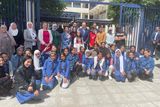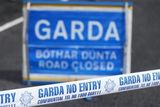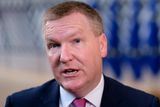Primary school principals face huge challenges managing Covid outbreaks and children displaying concerning symptoms
Workload has increased significantly due to higher numbers of outbreaks in classes
It is tricky to manage Covid outbreaks in schools. Picture by Getty Images
Primary school principals say their workload has increased significantly this year because of higher numbers of Covid outbreaks or children displaying concerning symptoms.
They are anxious about new public health guidelines to reduce testing and isolation for children who are close contacts of a confirmed case.
A rise in the number of suspected Covid-19 cases since schools returned at the start of the month has increased pressure on the HSE to keep up with demand for testing and tracing.
Principal at St Joseph’s Primary School in Tipperary, Louise Tobin, said she and colleagues have noticed a significant increase in Covid-related work since schools returned from their summer break compared to last year.
“Principals feel they are on call the whole time,” she said. “I am back in a place where I am bringing home the emergency contacts file with me all the time. I have it with me constantly and must make sure the laptop is charged in case I need to send the details of the pods and groups to the HSE.
“There is no doubt about it that it creates more stress, especially for a teaching principal who has to manage outbreaks, make sure supervision is adequate when a child is symptomatic and while they wait on the HSE to call them.
“The words coming up when I speak with colleagues are ‘chaotic’, ‘challenging’ and ‘stressful’. This sounds negative but we are happy to be back in school, we have everything in place and the Department of Education has been helpful in responding to queries and getting back to us — but it is challenging.”
According to the most recent Health Protection Surveillance Centre (HPSC) figures, there were 40 Covid-19 outbreaks in schools during the second week of term. Primary schools were most impacted, accounting for 34 of the outbreaks.
Ms Tobin said this has had an impact on how schools respond to potential cases.
“There is a ripple effect every time a child needs to be isolated. Typically the teacher will go with them rather than someone else because it’s a person the child is familiar with. That has an impact on supervision because a principal or a special ed will have to step in and supervise the class while they wait for a parent to come and collect the child. That can take half an hour or more depending on whether they are in work or have to travel from somewhere.
Secondary schools have benefited from significant take up of Covid vaccines. Sources said 45pc of children aged 12 to 17 have been fully vaccinated. Health officials predict up to 70pc will have received at least one dose by the start of this week.
Ms Tobin said principals have also noticed an increase in the number of coughs, sore throats and runny noses compared to a year ago. In cases where a child is displaying symptoms of Covid-19 they must be isolated to prevent spread of the virus.
Ms Tobin said parents have been diligent in making sure children with symptoms are kept at home, but colleagues are aware that this can be challenging for working families.
Nphet said favourable reports on Covid-19 from schools could see restrictions eased from September 27. However, teachers’ unions have expressed concern about relaxing restrictions requiring children who are close contacts to stay at home.
The INTO said the reopening of schools should not be reviewed until closer to the mid-term break. Fórsa, which represents SNAs, also called on public health officials to wait for more data before making a decision.
TUI general secretary Michael Gillespie said the reason a significant number of pupils are self-isolating is because schools have reacted to symptoms and potential outbreaks appropriately.
“We are still looking at the figures to measure the impact of the Delta variant and need some more time to consider those,” he added.
Join the Irish Independent WhatsApp channel
Stay up to date with all the latest news














